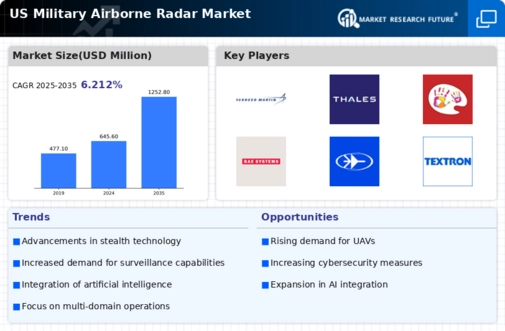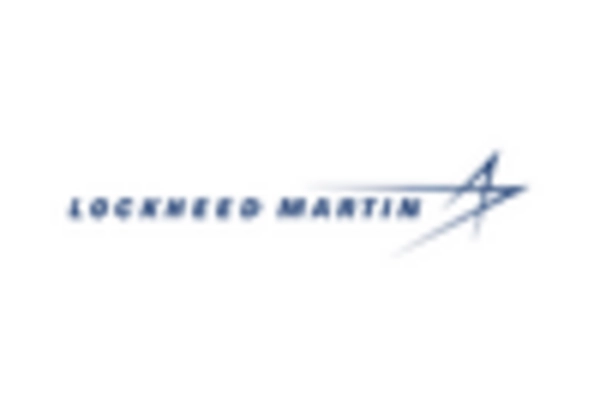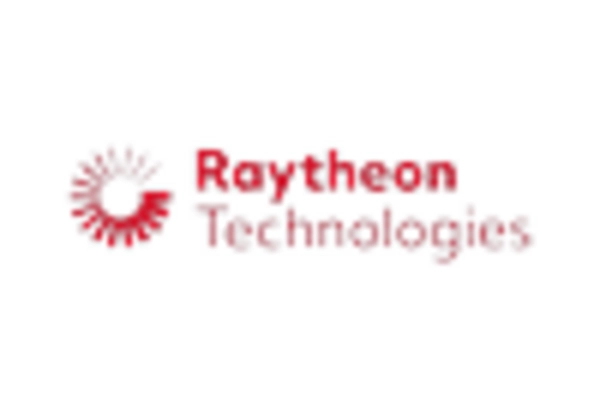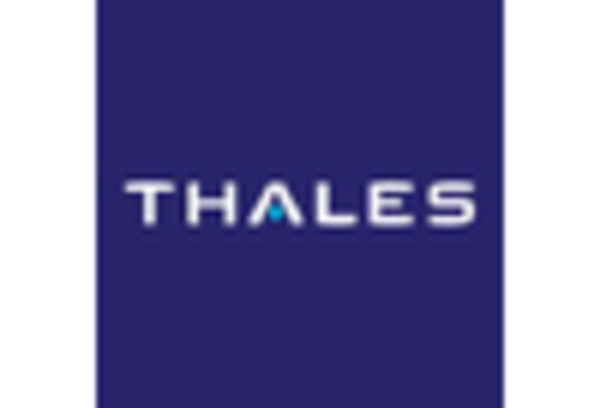Collaboration with Private Sector
Collaboration with the private sector is emerging as a vital driver for the military airborne-radar market. Partnerships between defense contractors and technology firms are fostering innovation and accelerating the development of advanced radar systems. These collaborations enable the military to leverage cutting-edge technologies and expertise from the commercial sector, resulting in more effective and efficient radar solutions. The US military has increasingly engaged with private companies to enhance its capabilities, leading to a more dynamic and responsive military airborne-radar market. This trend is expected to contribute to a market growth rate of approximately 12% over the next few years, as new technologies are rapidly integrated into military operations.
Increased Focus on Homeland Security
The increased focus on homeland security is driving demand in the military airborne-radar market. With the rise of asymmetric threats and domestic security challenges, there is a heightened need for advanced surveillance systems to protect national interests. Military airborne-radar systems play a crucial role in monitoring airspace and detecting potential threats. The US government has recognized this need, leading to increased funding for radar technologies that enhance border security and counter-terrorism efforts. As a result, the military airborne-radar market is anticipated to grow, with estimates suggesting a market expansion of around 10% annually as new systems are deployed to address these challenges.
Integration of Artificial Intelligence
The integration of artificial intelligence (AI) into military airborne-radar systems is a significant driver for the market. AI enhances the capabilities of radar systems by improving target detection, tracking, and classification. This technological advancement allows for more efficient data processing and decision-making, which is crucial in modern warfare scenarios. The military airborne-radar market is likely to see an increase in demand for AI-enabled systems, as they provide a competitive edge in combat situations. The US military has allocated substantial funding for research and development in this area, with estimates suggesting that AI integration could reduce operational costs by up to 20% while increasing mission effectiveness.
Modernization of Defense Infrastructure
The modernization of defense infrastructure is a critical driver for the military airborne-radar market. As military forces seek to upgrade their capabilities, there is a concerted effort to replace outdated systems with state-of-the-art radar technologies. This modernization initiative is fueled by the need for enhanced detection and tracking capabilities in increasingly complex operational environments. The US government has earmarked billions of dollars for defense modernization programs, which include investments in advanced radar systems. The military airborne-radar market is expected to benefit significantly from these initiatives, with projections indicating a market value increase of approximately 15% over the next five years.
Emerging Threats and Geopolitical Tensions
The military airborne-radar market is experiencing growth due to emerging threats and geopolitical tensions. Nations are increasingly investing in advanced radar systems to enhance their surveillance capabilities. The need for real-time intelligence and situational awareness has become paramount, particularly in regions with rising military activities. As a result, defense budgets are being allocated towards upgrading existing radar systems and developing new technologies. In the US, The military airborne-radar market is projected to reach approximately $5 billion by 2026, reflecting a compound annual growth rate (CAGR) of around 4.5% from 2024. This trend indicates a strong commitment to maintaining air superiority and addressing potential threats.

















Leave a Comment